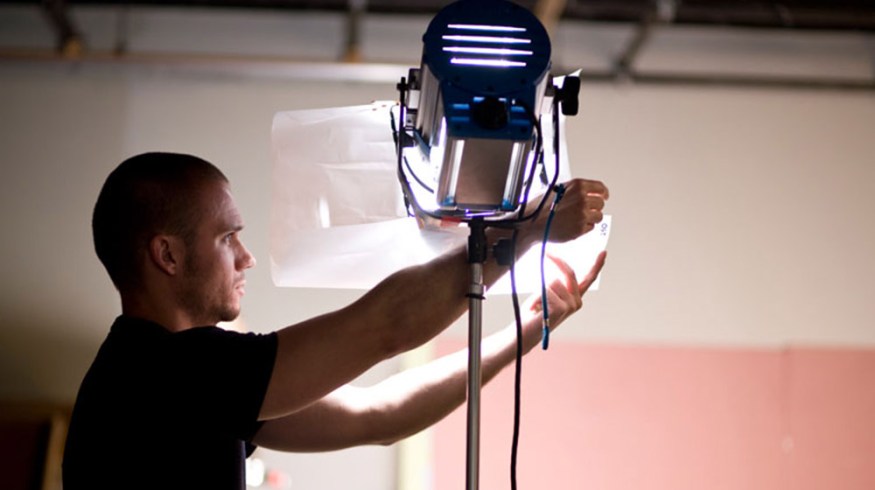
Cinematography Tips: Light Your Scene With A Single Light
It can be a real challenge to light a scene using only a single light source, but these cinematography tips and techniques will help you achieve amazing results even with limited gear.
A standard 3 point lighting kit has three lights for a reason. Typically your key light is going to cause shadows that need to be filled in (enter: the fill light) and a background or rim light will round off the look by adding some more polish to the scene. So how can you achieve this aesthetic when working with limited resources, or specifically with only a single light? There are three main options I’d recommend in this scenario:
1. Use a bounce board as fill.

Image from Wikipedia
Just because you don’t have another light doesn’t mean you can’t reflect back some of your key light to create some fill. One of the simplest and most effective ways to add another light source (without adding another light) is to grab your flex fill or foam core and place it on the opposite side of your key to fill in the shadows.
2. Backlight your subject.

Image from Movies Kick Ass
You don’t always need to go for a 3 point (or even a 2 point) look. In some situations you can get away with only using one light source and make it work to your advantage. One of these scenarios would be a backlit scene: by placing your light behind (and above) your talent, you can effectively put them in silhouette and create a dynamic look without having to use a second light. If you want to fill in the shadows a bit more, bring back that bounce board and reflect the back light onto your talent.
3. Use it as fill.

Image from the American Society of Cinematographers
When you’re working with a full lighting kit on an interior shoot, you’ve got the luxury of blacking out all the windows and controlling the light with your kit entirely. However, when you’ve only got a single light to work with, sometimes the opposite is required. Rather than cutting out all of your light, find a way to use window light as your key, and use your single light as fill. Keep in mind that you’ll need to add a gel to your light to daylight balance it if it’s a tungsten lamp.
Working with a single light shouldn’t prevent you from creating a dynamic setup. It only means you need to look for other ways to control, reflect, or harness light using the limited tools you have available to you.
Here are a few more PremiumBeat articles on the subject of lighting.
- 5 DIY Lighting Tips For Filmmakers on a Budget
- 5 Practical Cinematic Lighting Tutorials
- Lighting Tips to Consider Before Shooting Your Next Film
Got any lighting tips for your fellow filmmakers? Let us know in the comments below!





